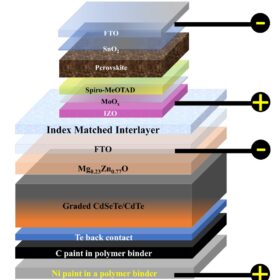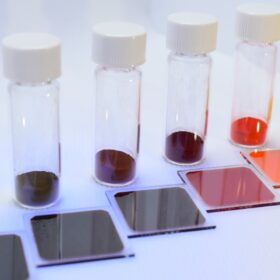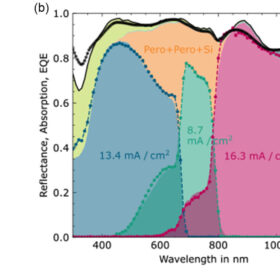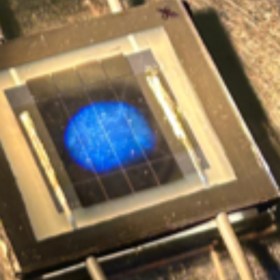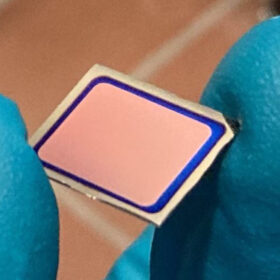Top cell transparency remains critical challenge for tandem solar cells
New research from Germany has shown how improving top-cell transparency and performance remains key to the commercialization of tandem perovskite-silicon solar cells, as well as for all other types of tandem devices. The analysis demonstrated, in particular, that the top cell must achieve higher single-cell efficiency to compensate for reduced transparency.
Perovskite-HJT tandem solar cell based on phosphonic acid, self-assembled monolayer achieves 30.22% efficiency
Researchers in Switzerland have fabricated a perovskite-silicon tandem solar cells that utilizes a heterojunction cell as bottom device. The cell is said to circumvent the film formation issue associated with the use of phosphonic acid and achieve high efficiency levels.
Fraunhofer ISE concludes perovskite-silicon tandem solar cell project
The five-year MaNiTU project, involving six Fraunhofer institutes, covered a range of investigations across the life cycle of perovskite-silicon tandem solar cells. It included the development of a scalable solar cell with a 31.6% power conversion efficiency.
Self-cleaning perovskite solar cell based on leek leaves-like film achieves 14.2% efficiency
Scientists in Finland have built a perovskite solar cell with a bio-inspired coating that reportedly improves light transmittance while providing self-cleaning properties. The film was able to improve the device efficiency by up to 6%.
Two-terminal perovskite-CIGS tandem solar cells have technical potential to achieve 26.69% efficiency
A Dutch and U.S. research team performed optical and electrical simulations to understand loss mechanisms in two terminal (2T) tandem cells based on perovskite and commercially available copper-indium-gallium-selenide (CIGS) cells, and subsequently established a roadmap to increase efficiency via four key modifications.
Perovskite-cadmium telluride tandem solar cell based on special electrode achieves 24.2% efficiency
An Indian-US research team has fabricated a four-terminal perovskite-cadmium telluride tandem solar cell by utilizing a highly conductive and sputtered transparent electrode to increase the current density of the bottom cell. The tandem device combines a 18.3%-efficient top perovskite cell and a 19.53%-efficient cadmium telluride bottom device.
New vapor deposition tech could accelerate commercialization of perovskite solar cells
A U.S.-based team developed a vapor deposition technique to fabricate outperforming all-inorganic perovskite thin films in under 5 minutes in a continuous process. The adoption of the proposed approach may also result in higher perovskite solar cell power conversion efficiencies.
Perovskite-perovskite-silicon triple-junction solar cells have technical potential to reach 44.3% efficiency
A German research team has investigated the optical properties of perovskite/perovskite/silicon triple-junction cells and has found these devices may have a practical efficiency potential of 44.3% assuming idealized electrical parameters. These cells may also potentially achieve a fill factor of 90.1%.
New roadmap identifies critical priorities for commercialization of tandem solar cells
NREL researchers reviewed and assessed a variety of tandem solar cell pairings on technology status and prospects. Their work is intended to identify what kind of work lies ahead on the path to commercialization.
First attempt to build selenium-silicon tandem solar cells
Scientists in Denmark attempted for the first time to build a selenium-silicon tandem solar cell and found the device was immediately able to deliver a remarkable open-circuit voltage. Despite its current low efficiency levels, the new cell concept promises to reach efficiencies over 40%, according to its creators.




